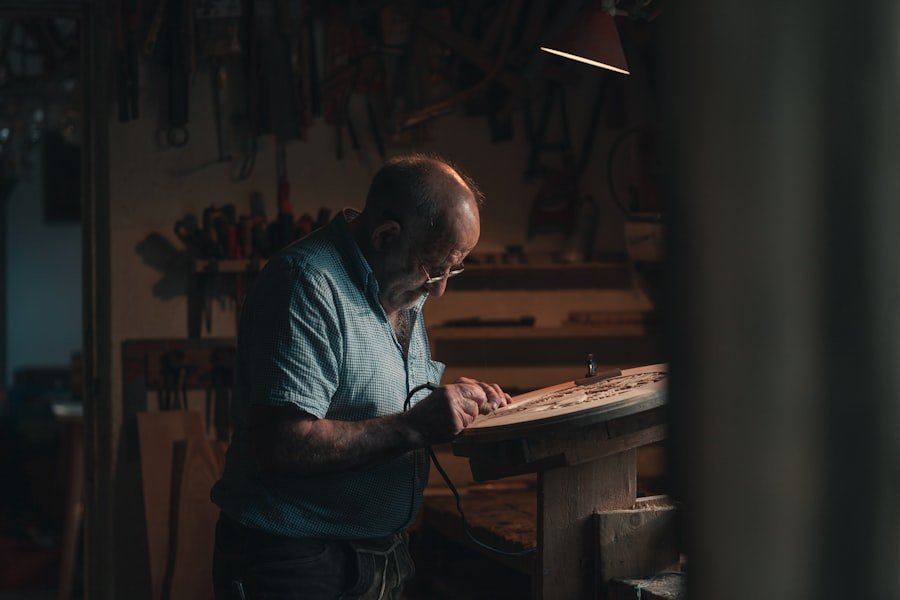In today’s fast-paced world, the significance of having a well-equipped home tool kit cannot be overstated. A home tool kit serves as an essential resource for homeowners, empowering them to tackle a variety of tasks ranging from minor repairs to significant renovations. The convenience of having the right tools at hand not only saves time but also reduces the reliance on professional services, which can often be costly and time-consuming.
Whether it’s fixing a leaky faucet, hanging a picture frame, or assembling furniture, a comprehensive tool kit enables individuals to address these challenges with confidence and efficiency. Moreover, possessing a tool kit fosters a sense of self-sufficiency and accomplishment, allowing homeowners to take pride in their ability to maintain and improve their living spaces. Furthermore, the importance of a home tool kit extends beyond mere convenience; it also plays a crucial role in enhancing safety and preventing accidents.
When homeowners are equipped with the right tools, they are less likely to resort to makeshift solutions that can lead to injuries or further damage. For instance, using a proper ladder instead of a chair to reach high places significantly reduces the risk of falls. Additionally, having the right tools on hand encourages proactive maintenance, which can prevent small issues from escalating into larger, more expensive problems.
In essence, a well-stocked home tool kit is not just a collection of instruments; it is an investment in safety, efficiency, and the overall well-being of one’s home.
Key Takeaways
- Having a home tool kit is important for handling basic repairs and maintenance tasks around the house.
- Basic tools every household should have include a hammer, screwdriver set, pliers, tape measure, and adjustable wrench.
- Specialized tools for DIY projects may include a power drill, saw, level, and stud finder.
- Safety equipment for home repairs should include gloves, safety goggles, and a dust mask.
- Organizing and storing your home tool kit is essential for easy access and maintenance.
- Regular maintenance and upkeep of home tools is necessary to ensure they are in good working condition.
- Quality home tools can be purchased at hardware stores, home improvement centers, and online retailers.
Basic Tools Every Household Should Have
Essential Tools for Every Household
Every household should be equipped with a set of basic tools that can address common repair and maintenance tasks. At the core of any tool kit is the hammer, an indispensable instrument for driving nails and performing various construction tasks. Coupled with a set of screwdrivers—both flathead and Phillips—homeowners can easily assemble furniture, tighten loose screws, or make adjustments to appliances.
Measuring and Gripping Tools
A tape measure is another essential tool that ensures precision in any project, whether it’s measuring for new furniture or planning renovations. Additionally, pliers and wrenches are vital for gripping and turning nuts and bolts, making them crucial for plumbing repairs and other mechanical tasks.
Additional Must-Have Tools
In addition to these fundamental tools, a reliable utility knife is essential for cutting through materials such as cardboard, rope, or drywall. A level is also important for ensuring that pictures are hung straight and shelves are installed correctly. Furthermore, a sturdy pair of work gloves can protect hands from cuts and abrasions while working on various projects. Lastly, a flashlight or headlamp is invaluable for illuminating dark spaces during repairs or inspections.
The Benefits of a Well-Stocked Tool Kit
By having these basic tools readily available, homeowners can confidently tackle everyday tasks and maintain their living environment with ease.
Specialized Tools for DIY Projects

While basic tools are essential for everyday repairs, specialized tools can elevate DIY projects to new heights. For instance, a power drill is an invaluable addition to any tool kit, allowing homeowners to drill holes and drive screws with speed and efficiency. Cordless drills offer the added benefit of portability, making them ideal for both indoor and outdoor projects.
Another specialized tool worth considering is a circular saw, which can make quick work of cutting wood for furniture or home improvement projects. With the right saw in hand, homeowners can create custom pieces that fit their unique style and needs. Moreover, specialized tools such as a stud finder can simplify the process of hanging heavy items on walls by locating wooden beams behind drywall.
A miter saw is another excellent investment for those who enjoy woodworking or crafting, as it allows for precise angled cuts that are essential for creating frames or trim work. For those interested in gardening or landscaping projects, tools like a trowel or pruning shears can make outdoor tasks more manageable. By incorporating specialized tools into their home tool kit, DIY enthusiasts can expand their capabilities and take on more ambitious projects with confidence.
Safety Equipment for Home Repairs
| Item | Description | Usage |
|---|---|---|
| Safety Goggles | Protects eyes from dust, debris, and chemicals | Wear when using power tools or handling hazardous materials |
| Work Gloves | Provides hand protection from cuts, abrasions, and chemicals | Use when handling sharp objects or working with chemicals |
| Ear Plugs | Reduces noise exposure and protects hearing | Wear when using loud power tools or in noisy environments |
| Dust Mask | Filters out dust, pollen, and other airborne particles | Use when sanding, painting, or working with insulation |
Safety should always be a top priority when undertaking home repairs or DIY projects. Having the right safety equipment is crucial in preventing accidents and injuries while working with tools and materials. One of the most important pieces of safety gear is eye protection; safety goggles shield the eyes from dust, debris, and flying particles that can occur during cutting or drilling tasks.
Additionally, wearing ear protection is advisable when using loud power tools to prevent long-term hearing damage. A good pair of work gloves not only protects hands from cuts and scrapes but also provides grip when handling tools or materials. Another essential aspect of safety equipment is proper footwear.
Sturdy shoes with non-slip soles can help prevent slips and falls while providing support during long hours of work. In some cases, knee pads may also be beneficial for those who spend extended periods kneeling on hard surfaces while working on projects like flooring installation or plumbing repairs. Furthermore, having a first aid kit readily available ensures that minor injuries can be treated promptly without interrupting the workflow.
By prioritizing safety equipment in their home tool kit, homeowners can create a secure environment that allows them to focus on their projects without unnecessary risks.
Organizing and Storing Your Home Tool Kit
An organized tool kit is essential for maximizing efficiency and ensuring that tools are easily accessible when needed. One effective way to achieve organization is by using a dedicated toolbox or storage system that accommodates various tools and accessories. Toolboxes come in various sizes and configurations, allowing homeowners to choose one that best fits their needs.
For smaller tools like screwdrivers and pliers, organizers with compartments can help keep everything in its place, preventing frustration when searching for specific items during a project. In addition to traditional toolboxes, wall-mounted pegboards offer an innovative solution for organizing tools in a garage or workshop setting. By hanging tools on pegboards, homeowners can easily see what they have at a glance while keeping surfaces clear for other tasks.
Labeling storage containers or drawers can further enhance organization by ensuring that each tool has its designated spot. Regularly reviewing and decluttering the tool kit also helps maintain order; removing broken or unused tools allows homeowners to focus on what they truly need for their projects. By implementing effective organization strategies, individuals can streamline their workflow and make home repairs more enjoyable.
Maintenance and Upkeep of Home Tools

Importance of Tool Maintenance
Proper maintenance and upkeep of home tools are vital for ensuring their longevity and optimal performance. Regular cleaning is one of the simplest yet most effective ways to care for tools; removing dirt, dust, and debris after each use prevents corrosion and wear over time. For metal tools like wrenches and pliers, applying a light coat of oil can help protect against rust while keeping moving parts functioning smoothly.
Identifying and Addressing Damage
Additionally, checking for any signs of damage or wear—such as frayed cords on power tools or dull blades on saws—allows homeowners to address issues before they escalate into more significant problems. This proactive approach can help prevent costly repairs and ensure tools remain in good working condition.
Storage and Maintenance Best Practices
Proper storage is also an essential aspect of tool maintenance. Keeping tools in a dry environment helps prevent moisture-related damage while protecting them from dust accumulation. For power tools, following the manufacturer’s guidelines for maintenance—such as changing filters or lubricating moving parts—ensures they remain in good working condition. Furthermore, creating an inventory system to track tools can help homeowners identify when replacements are necessary or when it’s time to invest in upgrades.
Where to Buy Quality Home Tools
When it comes to purchasing quality home tools, homeowners have several options at their disposal. Local hardware stores often provide a wide selection of tools along with knowledgeable staff who can offer advice on specific products based on individual needs. These stores typically carry reputable brands known for their durability and performance, making them an excellent choice for those looking to invest in reliable equipment.
Additionally, shopping at local stores supports small businesses within the community while providing immediate access to tools without the wait associated with online orders. For those who prefer the convenience of online shopping, numerous websites specialize in home improvement tools and supplies. Major retailers like Amazon offer extensive selections along with customer reviews that can guide purchasing decisions.
Specialty websites dedicated to DIY enthusiasts often feature curated collections of high-quality tools tailored to specific projects or skill levels. Furthermore, second-hand marketplaces provide opportunities to find gently used tools at reduced prices; however, buyers should exercise caution by thoroughly inspecting items before purchase to ensure they meet quality standards. By exploring various purchasing avenues—both local and online—homeowners can find the best quality tools that suit their needs while staying within budget constraints.
If you’re looking to enhance your home maintenance skills, having the right tools is essential. While I don’t have a direct link to a toolkit article, you can always stay updated with other interesting news and articles. For instance, you might want to read about how investments can impact company stocks, such as the recent article on how Reliance Industries’ investment boosted Alok Industries’ stock by 20%. You can read more about it here. This could provide insights into economic trends that indirectly affect market prices for various home improvement products, including tools.
FAQs
What is a tools kit for home?
A tools kit for home is a collection of essential tools and equipment that are commonly used for various home improvement and repair tasks. It typically includes items such as hammers, screwdrivers, pliers, wrenches, tape measure, level, and other basic tools.
Why is a tools kit for home important?
Having a tools kit for home is important because it allows homeowners to perform basic repairs, maintenance, and DIY projects without having to rely on professional help. It can save time and money by enabling individuals to tackle small tasks on their own.
What are some common items found in a tools kit for home?
Common items found in a tools kit for home include a hammer, screwdrivers (both flathead and Phillips), pliers, adjustable wrench, tape measure, level, utility knife, flashlight, and a set of Allen wrenches. Additional items may include a power drill, saw, and other specialized tools depending on the homeowner’s needs.
Where can I purchase a tools kit for home?
Tools kits for home can be purchased at hardware stores, home improvement centers, and online retailers. They are available in various sizes and configurations to suit different needs and budgets.
How should I maintain a tools kit for home?
To maintain a tools kit for home, it is important to keep the tools clean, dry, and organized. Regularly inspect the tools for any signs of wear or damage, and replace or repair them as needed. Proper storage in a toolbox or cabinet can help prolong the life of the tools.


















+ There are no comments
Add yours